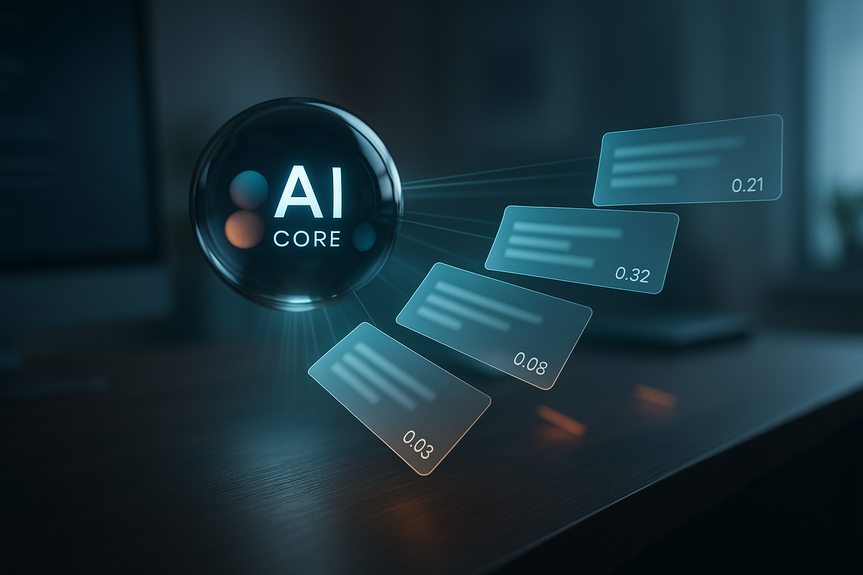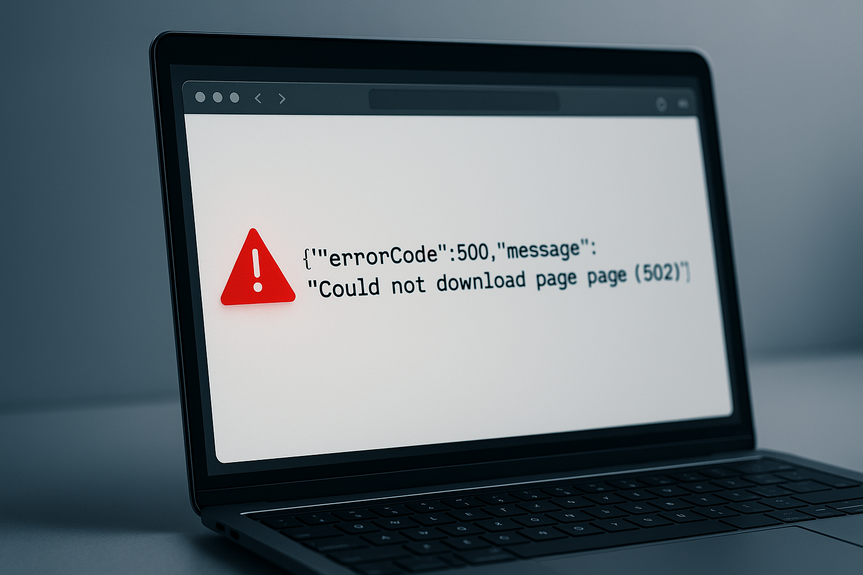
AI News
01 Nov 2025
Read 16 min
Future of AI coding tools 2025: How to outlast giants
future of AI coding tools 2025 shows how observability helps startups survive and outcompete giants
The future of AI coding tools 2025: Why pure code-gen is not enough
Large language models get better each quarter. They improve coding, tests, and refactors. They lower error rates and expand context windows. When code suggestions and repo search reach “good enough,” pure code-gen startups struggle to stand out.The cost and control squeeze
Most AI IDEs sit on top of third-party models. That creates risks: – Compute costs rise with usage but margins fall as giants drop API prices. – Vendors control availability, rate limits, and safety settings. – Model upgrades can erase feature advantages overnight. – Customers ask, “Why pay twice for the same model, once in our cloud plan and again in your IDE?” Some startups try to train their own coding models. But training is expensive. Giants run on massive chip clusters, like Amazon’s Trainium-based Project Rainier for Anthropic’s Claude. Chasing that hardware curve is hard.The “good enough” trap
The big providers now bundle coding UIs, repo integration, and agent workflows. If a team only needs suggestions, tests, and doc generation, a foundation model with GitHub access may meet the bar. This removes room for independent players unless they deliver value the base model cannot.Observability is the moat code-gen never had
Code exists to run. When apps fail in production, developers need signals, not guesses. Observability connects logs, metrics, traces, events, and changes into a clear picture. Tools that map service relationships and highlight cause-and-effect help engineers fix issues fast. This is where AI coding tools can win. If the assistant sees the runtime, it can propose fixes linked to real impact: – “This PR increased p95 latency by 20% on checkout.” – “This error spike started after commit abc123; roll back or apply patch X.” – “Memory leak appears after traffic pattern Y; tests A and B miss it; add test C.” Model providers can mimic IDE features. It is harder for them to build efficient, deterministic systems that ingest hundreds of terabytes of telemetry, align it to versions and deployments, and keep costs under control. That workload favors companies with deep data engineering and time-series expertise.What an integrated loop looks like
– Capture: Logs, metrics, traces, profiles, and feature flags stream into a data lake or warehouse. – Map: A knowledge graph ties signals to services, versions, commits, and owners. – Detect: AI watches for regressions, anomalies, SLO breaches, and security drifts. – Explain: The tool links the spike to a change and proposes code-level remediation. – Validate: It generates tests, runs them in staging, and shows expected impact on SLOs. – Apply: A developer reviews, approves, and ships with a clear rollback plan. This loop moves AI coding from “type faster” to “ship safer.”Survive and win: Nine strategies for the next wave
Build or buy: Own a model or ride the giants?
Owning a model is tempting. It promises control and margins. It also brings risk. When to train or fine-tune your own: – You have a clear, narrow domain with abundant labeled data. – Latency, privacy, or offline needs rule out a cloud API. – Unit economics work with quantized, small models at the edge. When to ride foundation models: – You need top-tier reasoning across many languages and frameworks. – You benefit from constant upgrades without carrying training costs. – Your edge comes from workflow, data integration, and verification, not raw model quality. Practical middle paths: – Use retrieval to bring private code and runtime context to the model. – Distill frequent tasks (like test generation or log summarization) into small models. – Add deterministic guards to keep outputs within policy. – Cache prompts and results to cut cost and speed up responses. – Run safety and license checks post-generation before code lands. The best teams treat models as interchangeable parts. They design for hot-swapping providers based on price, capability, and compliance — and keep their moat in data and workflow.Consolidation is coming: Who buys whom and when
If growth slows or the funding bubble cools, cash-heavy platforms will shop for bargains. Likely buyers include: – Observability and DevOps platforms that want “code to cloud” coverage. – Cloud providers seeking to deepen developer stickiness. – Repo and CI/CD leaders bundling agents, test, and runtime insights. – Security vendors adding supply chain and policy-as-code enforcement. What triggers deals: – Feature parity from models erodes IDE differentiation. – Startups face rising compute costs and falling API prices. – Customers push for fewer tools and unified workflows. – Valuations reset, making acquisitions accretive. For founders, the best defense is traction that ties to production outcomes. If your product lowers incidents or accelerates safe releases, you are valuable — as a standalone company or as an acquisition.What developers should demand next
Developers need tools that help them ship, not just type. Ask for: – Clear provenance and diffs: Show where every change came from, why it is safe, and how to roll back. – Reproducible runs: Same prompt, same context, same result under version control. – Strong guardrails: Secret scanning, license checks, policy enforcement before merge. – Test-first generation: Create tests with code and prove coverage gains automatically. – Staged validation: Try fixes in a sandbox with synthetic traffic before hitting production. – Privacy by design: Local or VPC inference, no training on your code unless you opt in. – Open integrations: No lock-in. Tools should work with your current repos, CI/CD, and observability stack. – Transparent costs: Cost per task and per successful merge, not opaque tokens. If vendors deliver these, AI becomes a teammate you can trust in the heat of an incident.Metrics that matter in 2025
The right KPIs help teams see real gains from AI coding tools: – Time to first useful suggestion in a repo – Time to merge for AI-touched PRs – Test coverage delta from AI-generated tests – Change failure rate and mean time to restore – Escaped defect rate per release – Incident frequency and duration tied to code changes – Cost per successful PR and per resolved incident – Model call cost per task and cache hit rate – Latency of suggestion under load – Developer satisfaction and retention Tie these to business outcomes like checkout conversion, uptime, and cloud spend. That is the language executives fund.Risks and guardrails: Keep velocity without breaking trust
AI that writes code can also ship mistakes at scale. Common risks include: – Hallucinated APIs or insecure patterns – License contamination in generated code – Secret leakage in prompts or logs – Data exfiltration through third-party calls – Over-reliance on suggestions that bypass review Practical protections: – Human-in-the-loop for every production change – Policy-as-code gates for security, compliance, and licenses – Sandboxed execution and strict egress controls – Automated test generation and mutation testing – Runtime canaries with fast rollback – Audit trails for all AI actions and decisions – Dataset curation and prompt hygiene to reduce leakage Treat the assistant like a junior teammate: empower it, verify it, and log everything.Bottom line
Pure code generation will not carry an AI IDE through the next cycle. The core models will keep getting better, and the giants will bundle “good enough” tools. The companies that last will connect coding to the runtime, own the workflow from ticket to telemetry, and prove results with hard numbers. That is the true direction for the future of AI coding tools 2025 — from fast typing to reliable shipping.For more news: Click Here
FAQ
Contents






